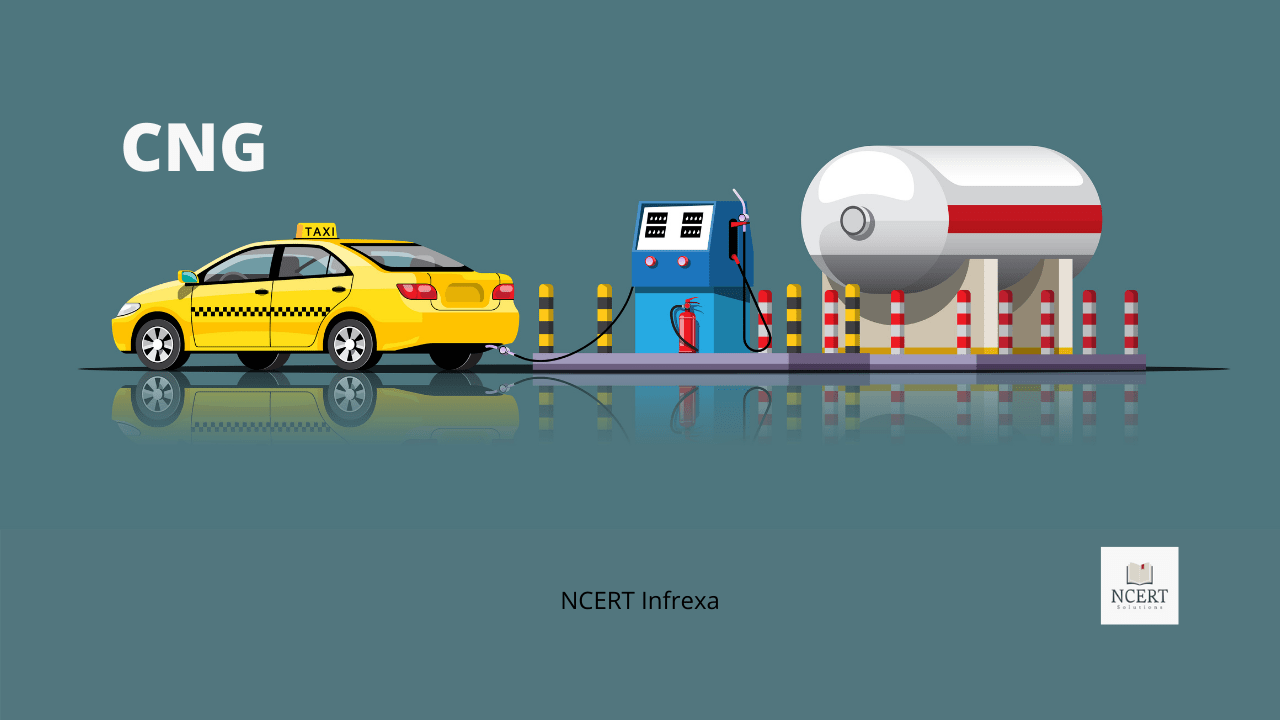American Depositary Receipt: ADRs are U.S. securities that represent shares in a non-U.S. company that trades on a U.S. stock exchange.
American depositary receipts (ADRs) make it easier for investors to buy and sell shares of foreign companies.
What is an American Depositary Receipt (ADR)?
An American Depositary Receipt (ADR) is a type of security that represents ownership of shares in a foreign company that trades on an American stock exchange.
ADRs were created to allow investors in the United States to easily invest in foreign companies.
Each ADR represents a certain number of shares of the underlying foreign stock. The number of shares represented by an ADR can vary but is typically between 1 and 100.
For example, if you own one ADR of Company XYZ, you own one share of Company XYZ.
ADRs are traded just like any other security on the stock exchange. They have ticker symbols and can be bought and sold through brokerages.
The price of an ADR fluctuates throughout the day as the underlying stock price changes.
One benefit of investing in ADRs is that they offer investors exposure to foreign companies without the hassle of dealing with different currencies or laws.
Another benefit is that many large, well-known companies have ADRs, so investors can easily add them to their portfolios.
Investors should be aware that there are some risks associated with investing in ADRs.
History of American Depositary Receipts (ADR)
The American Depositary Receipt, or ADR, is a financial instrument that has been used for over a century to facilitate cross-border investing. ADRs were first introduced in 1927 by J.P.
Morgan & Co. as a way to make it easier for foreign investors to trade U.S. stocks.
Today, ADRs are still used for the same purpose: to allow foreign investors to trade U.S. stocks without having to go through the hassle of dealing with the underlying physical shares.
ADRs have been used by some of the world’s largest companies to raise capital and expand their shareholder base. Some of the most well-known companies that have issued ADRs include Coca-Cola, IBM, and HSBC Holdings.
In total, there are over 5,000 companies from more than 75 countries that have issued ADRs on major U.S. exchanges.
While ADRs were originally created for foreign investors, they are now also popular with U.S.-based investors who want to gain exposure to foreign companies without having to deal with the added complexity of dealing with foreign currencies and securities laws.
How do ADRs work?
An American Depositary Receipt, or ADR, is a type of security that represents ownership of shares in a foreign company. ADRs are traded on U.S. exchanges just like regular stocks.
ADRs were created to make it easier for U.S. investors to buy and sell shares of foreign companies. They also allow foreign companies to tap into the large pool of U.S. investors.
When you buy an ADR, you are actually buying shares of the foreign company that has been deposited with a U.S. bank or brokerage firm. The bank or brokerage firm then issues the ADR to you.
Each ADR represents a certain number of shares of the foreign company. For example, one ADR might represent five shares of the foreign company’s stock.
ADRs are denominated in U.S. dollars, so you don’t have to worry about currency fluctuations when you trade them.
The price of an ADR will rise and fall just like the price of any other stock. But it can also be affected by news from the foreign country where the company is based, as well as by global economic events.
What is an ADR example?
An American depositary receipt (ADR) is a negotiable instrument that represents securities of a non-U.S. company that trades in the U.S. financial markets.
ADRs are denominated in U.S. dollars and trade on U.S. exchanges just like stocks of domestic companies.
ADRs were created to make it easier for U.S. investors to buy and sell the securities of foreign companies. An ADR holder has the same economic rights as a shareholder of the underlying foreign company, including voting rights and rights to dividends.
However, there are some important differences between ADRs and the underlying shares of foreign companies. For example, most ADRs are sponsored, meaning that there is a contract between the depositary bank and the Issuer of the ADRs.
The contract spells out certain investor protections, such as providing shareholders with periodic reports about the Issuer’s financial condition.
Types of American Depositary Receipts
There are three types of American Depositary Receipts:
- Sponsored ADRs
- Unsponsored ADRs
- Direct Registration System (DRS)
Sponsored ADRs
Sponsored ADRs are created when a foreign company partners with a U.S. depository bank. The depository bank then works with the U.S. Securities and Exchange Commission (SEC) to file the necessary paperwork.
Once the paperwork is filed, the sponsored ADR can be traded on U.S. exchanges like any other stock.
Unsponsored ADRs
Unsponsored ADRs are created when a foreign company decides to go alone and work directly with the SEC to file the necessary paperwork.
These Unsponsored ADRs can also be traded on U.S. exchanges like any other stock.
Direct Registration System (DRS)
The Direct Registration System (DRS) is an electronic system that allows investors to buy and sell stocks without having to go through a broker-dealer.
When an investor buys shares of a foreign company that has registered with the DRS, those shares are held in an account at the Depository Trust Company (DTC).
The DTC then sends confirmation of the transaction to both the buyer and the seller.
Features of ADR
An American depositary receipt (ADR) is a certificate of ownership of a foreign company’s shares that trade in the U.S. stock market.
They are sponsored by a U.S. bank or broker-dealer and represent a fraction of a foreign company’s shares.
ADRs have many features that make them attractive to investors, including:
- Liquidity: ADRs are traded on major U.S. exchanges and can be easily bought and sold.
- Pricing: ADRs are priced in U.S. dollars, so investors don’t need to worry about currency fluctuations.
- Dividends: Dividends on ADRs are paid in U.S. dollars, so investors don’t need to worry about currency fluctuations.
- Information: Because ADRs trade on major U.S. exchanges, there is a wealth of information available about them.
The benefits of investing in ADRs
When it comes to investing in foreign companies, American Depositary Receipts (ADRs) offer a number of advantages. ADRs are U.S. securities that represent ownership in a foreign company.
They trade on U.S. exchanges and are subject to U.S. regulations, which can make them more attractive to investors than buying the underlying foreign shares.
ADRs can also provide greater liquidity than investing directly in foreign shares. And because ADRs are denominated in U.S. dollars, investors don’t have to worry about currency fluctuations when they buy or sell them.
Investing in ADRs can also offer diversification benefits. By allowing investors to tap into foreign markets, ADRs can help reduce the overall risk of a portfolio.
You may like this also – What is FCRA and how does it work?
If you’re thinking about investing in ADRs, be sure to do your homework first.
Talk to your financial advisor about whether they’re right for you and research the individual ADRs you’re interested in before buying any shares.
The risks of investing in ADRs
When it comes to investing in American Depositary Receipts (ADRs), there are a few risks that you should be aware of.
Because ADRs are traded on foreign exchanges, they may be subject to different regulatory requirements than other securities.
This can make it more difficult for investors to get accurate information about the underlying security.
In addition, ADRs may be less liquid than other securities, which can make it more difficult to sell them when you need to.
Another risk to consider is that the value of an ADR may not always track the value of the underlying security. This is because the ADR price is set by the market, and may not always reflect the actual value of the security.
For example, if there is negative news about the company that issues the security, the ADR price may not fall as much as the underlying security. This means that you could lose money on your investment even if the company is doing well.
Before investing in ADRs, be sure to do your research and understand the risks involved. This will help you make informed investment decisions and avoid potential losses.
How to buy ADRs
If you’re looking to invest in foreign companies, one option is to purchase American depositary receipts (ADRs).
ADRs are securities that represent ownership of a specified number of shares in a foreign company. They trade on U.S. exchanges and can be bought and sold just like any other stock.
There are a few things to keep in mind when buying ADRs. First, make sure you’re familiar with the company and its financials. It’s also important to understand the currency risk involved.
When you purchase an ADR, you’re also buying exposure to the foreign currency in which the underlying shares are denominated.
Finally, remember that ADRs trade at a premium or discount to the underlying shares, so there’s potential for profits or losses beyond the changes in the share price itself.
To get started buying ADRs, you’ll need to open an account with a broker that offers foreign securities trading. Once your account is open and funded, you can begin placing orders for ADRs just as you would any other security.
American Depositary Receipt Pricing and Costs
The main benefit of an ADR for investors is that it makes investing in foreign companies easier and more convenient. ADRs also tend to be more liquid than the underlying shares, which can make them a more attractive investment option.
However, there are some drawbacks to consider as well. For one, ADRs typically come with higher costs than investing directly in the underlying shares. This is because there are typically multiple middlemen involved in the process, including the depositary bank and broker-dealers.
In addition, ADRs may not always accurately reflect the underlying share price due to different reporting standards and regulations.
For example, some companies may only report their results on a quarterly basis, while others may do so monthly or even daily. This can make it difficult to get an accurate picture of the company’s financial health.
Investors should carefully consider all of these factors before deciding whether or not to invest in an ADR.
Sponsored vs. an Unsponsored ADR?
An American Depositary Receipt, or ADR, is a security that represents foreign shares of a company that trades on an American stock exchange. An ADR is bought and sold in the same way as any other stock on the exchange.
There are two types of ADRs: sponsored and unsponsored. A sponsored ADR is one that is set up and managed by the foreign company itself or by a U.S. broker-dealer that has been authorized by the company.
An unsponsored ADR, on the other hand, is not set up or managed by a foreign company; instead, it is set up by a U.S. bank or broker-dealer.
The difference between these two types of ADRs is important to understand because they can impact both the liquidity and the price of the security.
For example, because sponsored ADRs are set up and managed by the issuing company, there is typically more information available about them than about unsponsored ADRs. This can make them more attractive to investors and thus more liquid in practicality.
What are Global Depository Receipts (GDR)?
A GDR is a receipt for the underlying shares of a foreign company that is traded on a local stock exchange.
In essence, it is a way for investors to buy shares of a foreign company without having to go through the hassle of setting up a brokerage account in that country.
GDRs were first introduced in the early 1970s as a way to allow European investors to buy American stocks. At the time, there were few restrictions on foreign ownership of US shares and many Europeans were eager to invest in American companies.
However, setting up a brokerage account in the US was a complicated and expensive process.
GDRs solved this problem by giving European investors a way to buy American shares without having to go through all the red tape.
The GDR would be issued by a bank or other financial institution in the investor’s home country. The institution would then buy the underlying shares of the desired American company and hold them in the trust of the investor.
GDRs quickly became popular and are now used as a way to allow investors to buy shares of companies from all over the world.
They are particularly popular in emerging markets, where investing can be riskier and more complicated than in developed markets.
Is GDR part of FDI?
An American Depositary Receipt (ADR) is a negotiable instrument that represents securities of a non-U.S. company that trades in the U.S. financial markets. ADRs are issued by U.S. banks and broker-dealers and are traded on U.S. exchanges just like stocks of domestic companies.
The key difference between an ADR and a stock of a foreign company is that an ADR is denominated in U.S. dollars, while a foreign stock may be denominated in the local currency of the country where the company is based. ADRs also may be sponsored or unsponsored.
Sponsored ADRs are established with the cooperation of the foreign issuer of the underlying securities, while unsponsored ADRs are created without the involvement of the issuer.
Unsponsored ADRs may be less liquid than sponsored ADRs because there is usually no direct relationship between the depositary bank and the foreign issuer.
So now you know what an American Depositary Receipt is, but what about Global Depositary Receipts (GDRs)? A GDR is very similar to an ADR, but as the name implies, GDR.
Why Do Foreign Companies List ADRs?
If you’re a foreign company looking to raise money in the U.S. capital markets, one option is to list American depositary receipts (ADRs) on a U.S. exchange.
There are several reasons why a foreign company might choose to list ADRs:
- To broaden the investor base: By listing ADRs, a foreign company can tap into the large pool of U.S. investors who may not be able or willing to invest in foreign stocks that trade on foreign exchanges.
- To increase visibility: A listing on a major U.S. exchange can raise the profile of a foreign company and help it become better known among potential customers, business partners, and employees.
- To save on costs: Listing ADRs can be cheaper and simpler than setting up a separate listing on a foreign exchange. In addition, many big institutional investors will only invest in stocks that trade on major U.S. exchanges.
Meaning and Functions of Global Depository Receipts
A Global Depository Receipt, or GDR, is a financial instrument that allows investors to buy shares in a foreign company without having to go through the process of setting up a foreign brokerage account. GDRs are traded on stock exchanges around the world and can be bought and sold just like any other stock.
GDRs were created in the 1970s as a way for large multinational companies to raise capital in multiple markets without having to go through the time-consuming and expensive process of listing on each individual exchange.
Today, there are more than 2,000 companies with GDR programs, and they are available for purchase in more than 100 different countries.
GDRs offer investors many of the same benefits as buying shares of stock in a foreign company directly. They provide exposure to a wider range of investment opportunities and can help diversify a portfolio.
GDRs also tend to be more liquid than direct investments, meaning they can be bought and sold more easily.
However, there are also some risks associated with investing in GDRs. Because they trade on multiple exchanges, GDR prices can be more volatile than stocks that trade on just one exchange. And because GDRs represent ownership of a foreign company.
The benefits of investing in Global Depository Receipts
Global Depository Receipts (GDRs) offer many benefits to both issuers and investors. For issuers, GDRs provide a way to raise capital in foreign markets without going through the time and expense of listing their shares on a foreign exchange.
For investors, GDRs offer the opportunity to invest in companies that may be otherwise unavailable or too risky to invest in directly.
GDRs also tend to be more stable and liquid than direct investments in foreign companies, as they are not subject to the same currency risks.
In addition, GDRs offer the potential for higher returns than comparable investments in the issuer’s home market.
If you’re considering investing in GDRs, it’s important to understand the risks involved.
While GDRs can provide diversification and stability, they are still subject to political and economic risks associated with the countries in which they are issued.
It’s also important to remember that GDRs traded on foreign exchanges and may be subject to different rules and regulations than investments in your home country.
The risks of investing in Global Depository Receipts
When it comes to investing in foreign companies, there are a few different options available to investors. One option is to purchase American Depositary Receipts, also known as ADRs.
While ADRs offer investors a way to invest in foreign companies without having to go through the hassle of dealing with different currencies, there are also some risks associated with this type of investment.
For starters, ADRs are typically more expensive than purchasing shares of the underlying stock on a foreign exchange. This is because there is an additional fee that is charged by the bank or financial institution that issues the ADR.
In addition, investors may also have to pay currency conversion fees if they are investing in a company that is based in a foreign country.
Another risk to consider is that the value of an ADR can be affected by changes in the exchange rate between the U.S. dollar and the currency of the country where the underlying stock is traded.
For example, if you purchase an ADR for a company based in Japan and the value of the Japanese yen declines against the dollar, then your investment will lose value.
Finally, it’s important to remember that when you invest in an ADR you are not actually buying shares.
What is the difference between GDR and ADR?
An American Depositary Receipt (ADR) is a negotiable instrument that represents securities of a foreign company that trades in the U.S. financial markets.
ADRs are issued by a U.S. depositary bank and represent a fractional interest in a specified number of the underlying foreign shares.
GDRs are similar to ADRs, but they are issued by banks or other financial institutions in the country where the underlying security is based.
Similarities between GDR and ADR?
There are a few key similarities between global depositary receipts (GDRs) and American depositary receipts (ADRs).
Both are financial instruments that allow foreign companies to list their shares on U.S. exchanges, and both give investors the ability to trade the underlying securities without having to go through the hassle of directly owning the foreign asset.
However, there are a few key differences between GDRs and ADRs. One key difference is that GDRs can be issued by companies from any country, whereas ADRs can only be issued by companies from certain countries.
Additionally, GDRs are typically issued in larger denominations than ADRs, making them more suited for institutional investors.
Finally, GDRs typically trade on foreign exchanges, while ADRs trade on U.S. exchanges.
Conclusion
An American Depositary Receipt (ADR) is a type of security that represents shares in a foreign company that trades on an American stock exchange. ADRs are denominated in U.S. dollars and can be traded just like any other stock on the exchange.
They provide investors with a convenient way to invest in foreign companies without having to go through the hassle of dealing with different currencies.
Read this also –




